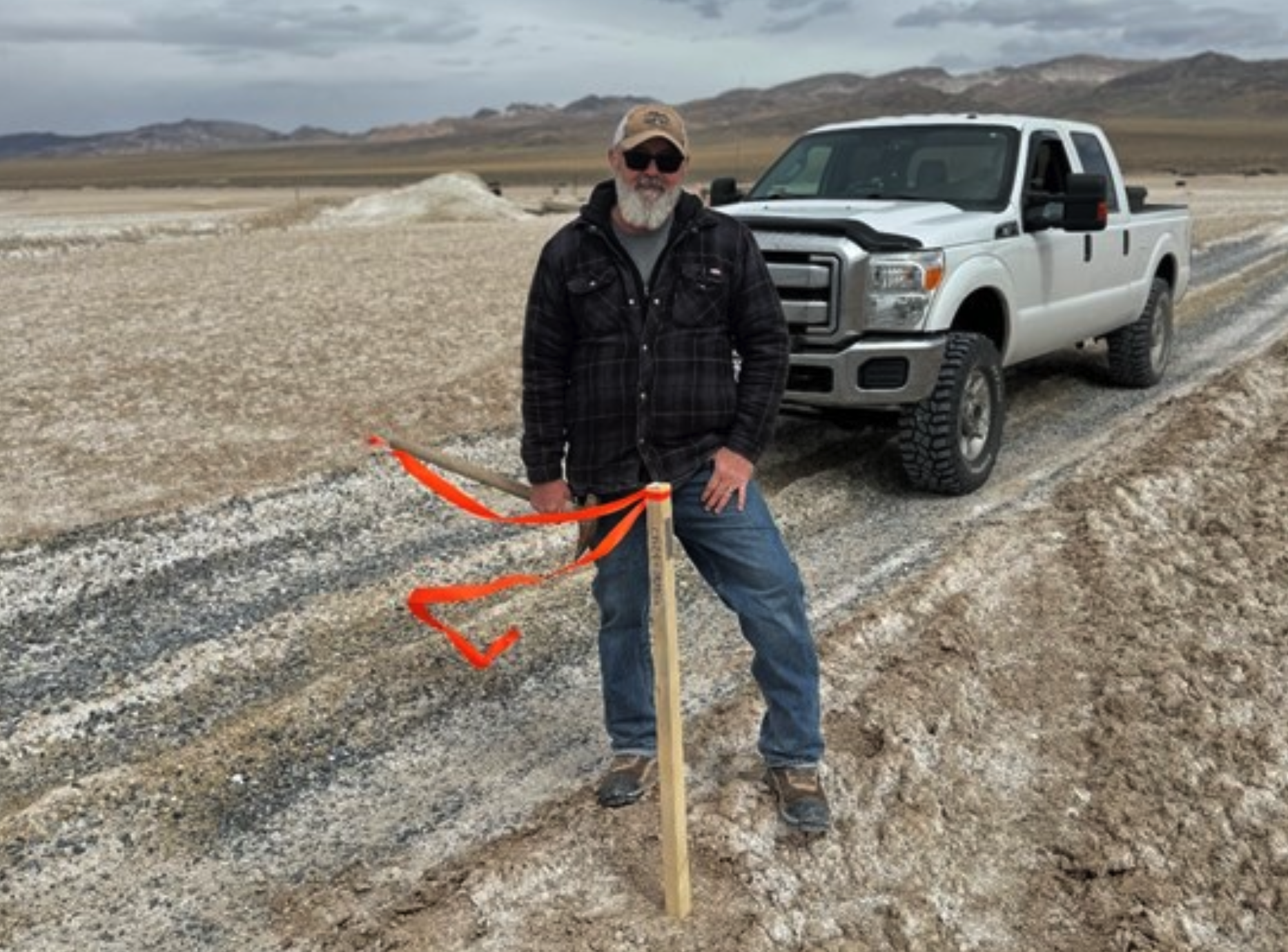The Energy Report: The recent announcement that Tesla Motors Inc. (TSLA:NASDAQ) has signed an agreement to purchase lithium from Pure Energy Minerals Ltd. (PE:TSX.V) has created quite a bit of buzz in the mining world. How is this different than previous agreements with Bacanora Minerals Ltd. (BCN:TSX.V) and Rare Earth Minerals Plc (REM:LSE)?
Jeb Handwerger: The most significant difference is that this is in Nevada, where the Tesla gigafactory is being built. The battery and carmaker will need large quantities of lithium at a cheap price, and sourcing it in its backyard will be a smart move for the supply chain.
Years ago, I predicted the growth of the lithium-ion battery market and the need for a secure domestic supply of the critical materials used to make them. This is just the beginning. We're in the early stages of a revolution in powering transportation and homes. This really is disruptive technology. Annual growth in the battery space could be around 20%, which means that demand could double every five years. These batteries make smartphones, laptops, tablets, electric cars and even solar energy practical.
While the TSX Venture Exchange has been crushed in 2015, our positions in junior lithium mining companies have continued to outperform in dramatic ways. The news out of Tesla to secure supply from Pure Energy Minerals is a huge validation for the concept of lithium in Nevada.
"Annual growth in the battery space could be around 20%, which means that demand could double every five years."
In July, Pure Energy released an Inferred resource estimate of 816,000 metric tons of lithium carbonate equivalent on the Clayton Valley lithium brine project near Albemarle Corp.'s (ALB:NYSE) Silver Peak producing mine in Nevada. Now that Tesla has validated the project—and the investors that believed in the company—the company will be able to go to institutions and raise capital. There is still a lot more work to be done on the development, but Pure Energy is working with POSCO (PKX:NYSE) and Tenova Bateman to refine the plan. Like the gigafactory, production is probably two or three years out, and by that time, Pure Energy will probably have been bought out by a major like Albemarle. Once management comes out with a preliminary economic assessment (PEA) and shows the economics, this will be an irresistible takeout target. There is still a lot of upside there.
We believe this is the early innings of a great game in this lithium-ion battery market. This offtake agreement could affect the entire lithium space and, hopefully, spread to other junior mining companies.
TER: What other lithium mining companies do you think should be getting more attention in the wake of that deal?
JH: We've also followed the earlier-stage Dajin Resources Corp. (DJI:TSX.V; DJIFF:OTCPK), which has the Alkali Lake property and Teels Marsh property in Nevada. Both are earlier stage, but in the same area as Pure Energy. Dajin also has the Salinas Grandes in Argentina, but Argentina goes up and down. Nevada is always good. It is supportive of mining and a rule of law. That's the ideal place if you're looking to invest in mining.
A couple of years ago, I highlighted Western Lithium USA Corp. (WLC:TSX; WLCDF:OTCQX), which had a phenomenal run in 2014, even before Tesla chose Nevada. This company was No. 1 on the OTCQX in 2014. It has the Kings Valley deposit in northern Nevada, with a plan for production of 26,000 tonnes per year of lithium carbonate. Management raised $5 million ($5M) from major institutions and just merged with Lithium Americas Corp. (LAC:TSX; LHMAF:OTCQX) to create a significant lithium company.
TER: Lithium is just one of the ingredients in making a battery. Graphite is another. What does this deal mean for the graphite space? Are you anticipating more offtake agreements on the graphite side as well?
JH: I am. I think it's very important to have a secure supply of graphite since the market continues to be flooded by the Chinese. It's a critical mineral for lithium-ion batteries. Right now, the prices are extremely cheap because most of it is controlled by the Chinese, and the global economy has slowed down. But in the next three to five years, I expect more demand from the graphite sector in North America.
The key to success will be processing the graphite to meet the needs of the battery manufacturers. That is why I like Great Lakes Graphite Inc. (GLK:TSX.V; GLKIF:OTCPK; 8GL:FSE), which is developing a processing facility in Ontario at the Matheson project. It has secured the facility to process and to micronize graphite for specific industrial applications.
"In the next three to five years, I expect more demand from the graphite sector in North America."
I also like Graphite One Resources Inc. (GPH:TSX.V), which has a massive deposit of large-flake, high-grade graphite in Alaska. The company is in the midst of a $1.5M financing that will enable it to quantify the economics of the processing operating costs, and take it closer to a PEA. It's a potential secure supply of large-flake, high-grade graphite located in the U.S. that would be a natural fit for Tesla's gigafactory.
TER: You also follow the uranium market. Are you more optimistic about prices now that Japan has announced it is restarting nuclear reactors?
JH: There will be a rebound in the uranium market, possibly within weeks. The reactor restarts in Japan will be a major turnaround for the sector. Japan was a possible seller of uranium over the past few years. It is going to become a buyer once again. China will soon announce major plans to fight pollution and build out its infrastructure, which will include building major nuclear power plants at a record pace. India is also committed to nuclear. The uranium sector must not be ignored.
There is going to be huge growth in the Athabasca Basin, which has been highlighted recently by the consolidation of Denison Mines Corp.'s (DML:TSX; DNN:NYSE.MKT) high-grade Wheeler River project on the east side of the basin with the massive Patterson Lake South (PLS) discovery controlled by Fission Uranium Corp. (FCU:TSX). That merger is going to create a new Denison, which is a potential blue chip company. Denison has been around for a long time, but now it can boast the lowest cost uranium projects in the world. When uranium prices turn around, Denison, which is trading now at pennies, could be trading at dollars and maybe tens of dollars.
TER: What juniors in the Athabasca could benefit from the scenario you describe?
JH: I'm watching the Fission 3.0 Corp. (FUU:TSX.V; FSIOF:OTC) group closely. This management team is developing a basket of exploration projects in the basin. One of the projects, Clearwater, is partnered with a company called Canex Energy (CVE:CSC), which is right next to PLS, and it has a drill hole only 330 meters away that Fission drilled. It seems that the anomaly goes right onto Canex's Clearwater property. That's one project that I'm excited about.
TER: You highlighted the increasing M&A activity in uranium surrounding Fission and Denison. What other activity is going on in the uranium space?
JH: The trend of the industry is to look for low-cost production that can make money even during periods of low uranium prices. I recently bought Uranium Resources Inc. (URRE:NASDAQ) as I like its recently announced merger with Anatolia Energy Corp. (AEK:ASX), a near-term, lower cost, in-situ recovery deposit in Turkey. There are huge cost savings and synergies between Uranium Resources and Anatolia, which could lead to improving fundamentals post-merger. Turkey has a long history of mining with many major Western producers in the metals industry. The country has eight nuclear plants under construction, and Anatolia's Temrezli is the only advanced uranium asset with a prefeasibility study showing uranium cash costs around $30/pound, putting the asset in the lowest cost quartile. Uranium Resources' largest shareholder, the Resource Capital Fund, recently announced its public support for the merger. The cost savings, personnel and synergies of the merger are too great to ignore. I believe the combined entity could fast-track low-cost uranium production, as it will be listed on both the U.S. and Australian exchanges, providing excellent visibility, liquidity and access to mine finance institutions.
"The lithium-ion battery could change how we produce and store energy, just as the shale revolution changed the trajectory of the oil sector."
I also bought Plateau Uranium Inc. (PLU:TSX.V) after its recent share consolidation and name change. The company is working on an updated PEA on its large resource at the Macusani Plateau in mining-friendly Peru. With less than 41 million shares outstanding, I believe Plateau is in a position to possibly make impressive gains as the uranium mining market recovers.
TER: Where does oil fit into your risk assessment for the future of energy investing?
JH: This recent crash of oil from $100+ per barrel ($100+/bbl) to low-$40s/bbl in such a quick span has been a major crash. This crash may have been artificially manipulated to move lower by the shorts who want to take away market share from the U.S. and Canada. We haven't invested in oil in years, but these crashes create huge opportunities for longer-term investors. Oil is not going to stay at these depressed levels. The Federal Reserve didn't raise interest rates because it knows the global economy is in bad shape, and that could be a good thing for oil as governments around the world start injecting liquidity into the system.
TER: How are you approaching oil mining companies as an investment?
JH: I look for companies that have a strong shareholder base, lots of cash, no debt and are looking to get back into the oil business. They will be able to pick up assets for pennies on the dollar. Lithium in Nevada is big now, but a couple of years ago, these companies were trading for literally pennies. Right now, the Athabasca Basin stocks are trading at pennies, but two years from now, it's going to be the buzz. That's the way these markets work.
TER: Give me an example on the oil side of a company that could take advantage of this opportunity.
JH: One that I like because it has no debt and lots of cash and recently made acquisitions is a small company called Jericho Oil Corp. (JCO:TSX.V). I'm hoping that it can announce even more acquisitions, because as time goes on, these companies get more and more distressed. So if you have cash, you can buy these projects that other people put millions of dollars' worth of work into. You don't even have to drill. You just get it pretty much given to you for a song. The balance sheet and management team are worth watching.
TER: What words of wisdom do you have for those who are curious about the energy metals or the energy space?
JH: Don't get caught up buying when it's all over Twitter and USA Today, and it's overbought. Look for things with good fundamentals that are trading for pennies, and then patiently wait.
There's a huge amount of growth in whole new industries that people don't even realize. At the turn of the century, no one thought the internal combustion engine would ever replace the horse and buggy. But it changed the entire 20th century. The lithium-ion battery could change how we produce and store energy, just as the shale revolution changed the trajectory of the oil sector. The Athabasca Basin could one day become the Saudi Arabia of the 21st century. You have to think about the megatrends first and then invest accordingly. And be patient. As commodity investors, realize that cycles take time to develop. Nevertheless, it's better to be early.
Time is critical. It's the most valuable commodity of all, so don't waste it. Live every day to the maximum, because every day is a blessing.
TER: Thank you for your thoughts.
Jeb Handwerger is an author, speaker and founder of Gold Stock Trades. He studied engineering and mathematics at University of Buffalo and earned a Master's degree at Nova Southeastern University. After teaching technical analysis to professionals in South Florida for over seven years, Handwerger began a daily newsletter, which grew to include thousands of readers from over 40 nations. In 2014, Handwerger highlighted the two top stocks on the Best OTCQX 50.
DISCLOSURE:
1) JT Long conducted this interview for Streetwise Reports LLC, publisher of The Gold Report, The Energy Report and The Life Sciences Report and provides services to Streetwise Reports as an employee. She owns, or her family owns, shares of the following companies mentioned in this interview: None.
2) The following companies mentioned in the interview are sponsors of Streetwise Reports: Fission Uranium Corp. The companies mentioned in this interview were not involved in any aspect of the interview preparation or post-interview editing so the expert could speak independently about the sector. Streetwise Reports does not accept stock in exchange for its services.
3) Jeb Handwerger: I own, or my family owns, shares of the following companies mentioned in this interview: Fission Uranium Corp., Great Lakes Graphite Inc., Graphite One Resources Inc., Western Lithium USA Corp., Fission 3.0 Corp., Canex Energy, Uranium Resources Inc., Plateau Uranium Inc., Energy Fuels Inc., Jericho Oil Corp., Denison Mines Corp., Dajin Resource Corp., Pure Energy Minerals Ltd. I personally am, or my family is, paid by the following companies mentioned in this interview: None. My company is paid by the following companies mentioned in this interview, as they are advertisers on my website: Great Lakes Graphite Inc., Graphite One Resources Inc., Fission 3.0 Corp., Jericho Oil Corp., Dajin Resources Corp., Pure Energy Minerals Ltd., Uranium Resources Inc., Plateau Uranium Inc. I was not paid by Streetwise Reports for participating in this interview. Comments and opinions expressed are my own comments and opinions. I determined and had final say over which companies would be included in the interview based on my research, understanding of the sector and interview theme. I had the opportunity to review the interview for accuracy as of the date of the interview and am responsible for the content of the interview.
4) Interviews are edited for clarity. Streetwise Reports does not make editorial comments or change experts' statements without their consent.
5) The interview does not constitute investment advice. Each reader is encouraged to consult with his or her individual financial professional and any action a reader takes as a result of information presented here is his or her own responsibility. By opening this page, each reader accepts and agrees to Streetwise Reports' terms of use and full legal disclaimer.
6) From time to time, Streetwise Reports LLC and its directors, officers, employees or members of their families, as well as persons interviewed for articles and interviews on the site, may have a long or short position in securities mentioned. Directors, officers, employees or members of their families are prohibited from making purchases and/or sales of those securities in the open market or otherwise during the up-to-four-week interval from the time of the interview until after it publishes.





































